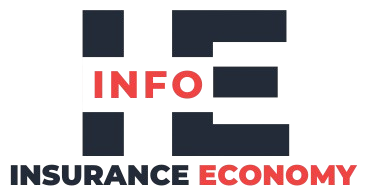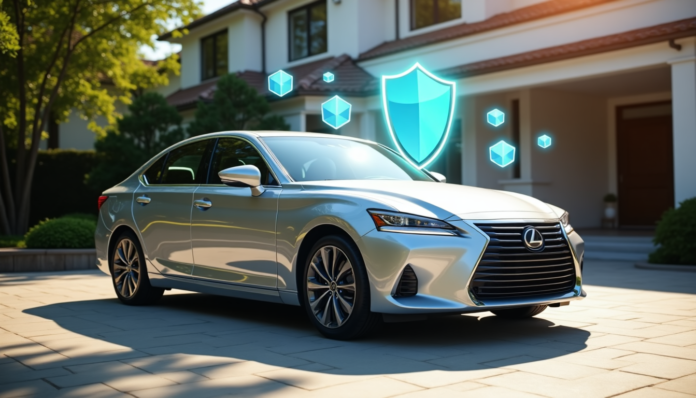Getting your first car insurance policy can feel daunting. Insurance companies offer countless coverage options with unfamiliar terms and different price points. Many new buyers find it hard to make smart decisions about their coverage.
The process of buying car insurance doesn’t need to be complex. You can purchase coverage online or through an agent with confidence. This complete guide simplifies the insurance-buying process into practical steps. It covers everything from simple coverage types to smart strategies that help you get the best rates for your first auto insurance policy.
Let us help you choose and buy the right car insurance coverage that fits your needs. You’ll learn how to review different policies and understand coverage requirements. The sort of thing I love about this piece is how it helps you find the best deals while ensuring you stay protected.
Understanding Car Insurance Basics for Beginners
Car insurance works as a contract between you and an insurance company to protect your vehicle financially. Let’s break down what you’re paying for to understand the simple aspects of buying car insurance.
What car insurance actually covers
Your auto insurance policy has these main types of coverage:
- Liability coverage: Pays for injuries or damage you cause to others
- Collision coverage: Covers damage to your car from accidents with vehicles or objects
- Comprehensive coverage: Protects against theft, vandalism, natural disasters, and other non-collision damage
- Medical payments coverage: Helps with medical costs whatever the fault
Why you need insurance before driving
Car insurance makes financial sense and most states require it by law. North Carolina requires all vehicles to maintain continuous liability insurance from a licensed company. Your insurance lapse could lead to civil penalties, license plate revocation, and extra fees between $50 and $150.
Common insurance terms explained
Learning insurance terminology helps you make better decisions when buying auto insurance. Here are the main terms you’ll see:
Premium: The cost you pay for your insurance coverage, which you can pay monthly, quarterly, semi-annually, or annually.
Deductible: The amount taken from your settlement for collision and comprehensive claims before insurance pays.
Liability limits: Often shown in number format like 100/300/50, representing bodily injury coverage per person/per crash and property damage coverage per crash.
Note that your policy is a legal document, so understanding these terms is significant to make informed decisions about your coverage.
Determining Your Coverage Needs
Personal factors play a crucial role in shaping your car insurance coverage decisions. Your annual mileage, location, and credit history substantially affect your insurance rates.
Assessing your driving habits and risks
Your car usage patterns matter a lot. Drivers who clock more than 15,000 miles annually pay higher insurance premiums than those who drive less than 12,000 miles per year. These key factors affect your rates:
- Your daily commute distance
- Your car’s overnight parking location
- Your vehicle’s make and model
- Your driving record and experience
Understanding state minimum requirements
All but one of these states (New Hampshire) require property and bodily injury liability coverage. California’s minimum liability coverage requirements serve as an example:
- $15,000 for injury/death to one person
- $30,000 for injury/death to more than one person
- $5,000 for property damage
Additional coverage options to consider
State minimums offer simple protection, but they might fall short. The lowest-priced policy often leaves out essential coverages like collision insurance, which helps fix your car after an accident. Leasing or financing your vehicle usually requires:
- Gap insurance: Covers the difference between your car’s value and what you owe
- Comprehensive coverage: Protects against theft, vandalism, and natural disasters
- Collision coverage: Pays for repairs after accidents
It’s worth mentioning that state minimum requirements provide basic protection only. Think over carrying extra liability coverage beyond legal requirements to protect your assets better.
Navigating the Digital Insurance Marketplace
The digital world now makes it simple to shop for car insurance online. The process looks easy enough, but knowing how to use insurance websites and comparison tools helps you find coverage that fits your needs perfectly.
Using online comparison tools effectively
Comparison tools let you look at multiple insurance quotes at once. These tools need some simple information about you – your name, address, vehicle details, and driving history. Getting accurate comparisons means entering the same information on every platform and finding the “compare rates” button to view different companies’ offerings.
Reading and understanding online quotes
As you review quotes online, check that you’re matching similar coverage levels and deductibles. Your quotes should all include:
- Coverage types and limits
- Deductible amounts
- Additional features or riders
- Payment terms and options
Note that the cheapest rate isn’t always your best value. Make sure coverages and limits line up between companies to get a true cost comparison.
Red flags to watch for when buying online
Insurance scams cost Americans over $308 billion each year, so staying alert while shopping online is vital. Here are some warning signs to spot:
- Random calls or emails promising unusually low rates
- Salespeople who push you to decide quickly
- Anyone asking for payment through unsecured methods
- Companies without verifiable credentials or licenses
You can protect yourself by checking the insurance company’s credentials on your state’s insurance commissioner’s website. Think about working with insurers that are 10+ years old and have strong financial ratings from A.M. Best or Standard & Poor’s. If something seems too good to be true, it usually is.
Smart Ways to Save on Your First Policy
You don’t have to give up quality coverage to cut down your insurance costs. Insurance companies give you many ways to lower your premiums while you retain control of your protection.
Available discounts for new drivers
Being a new driver actually opens up several ways to save money. Students who keep a B average or better can save up to 25% on their premiums. Young drivers have other money-saving options too:
- Driver training programs that offer extra savings
- Student-away-at-school discounts for college students
- Safe driving program enrollment that can save up to 30%
- New teen driver discounts by joining a parent’s policy
Bundling and multi-policy savings
Bundling multiple insurance policies is one of the best ways to reduce costs. You can save by a lot by combining your auto insurance with home or renters insurance. Major insurers give substantial bundling discounts:
- Liberty Mutual: Up to $950 annually
- State Farm: Up to $1,127
- Amica: Up to 30% off
Impact of deductibles on premium costs
Your choice of deductible makes a big difference in your premium payments. A jump from $200 to $500 deductible could cut your collision and comprehensive coverage costs by 15% to 30%. A $1,000 deductible might save you 40% or more. But note that higher deductibles mean bigger out-of-pocket expenses if you need to file a claim. Make sure you have enough saved up to cover your chosen deductible before making changes.
You might qualify for multiple discounts at the time you buy car insurance. A good student discount combined with bundling savings could maximize your total cost reduction while keeping appropriate coverage levels.
Conclusion
Getting your first car insurance policy can feel overwhelming. The right knowledge helps you make confident decisions about your coverage. Simple insurance terms, coverage types, and state requirements create a solid foundation to choose the right policy.
Quality research through trusted online tools and 20-year-old insurers keeps you safe from potential scams and helps you find better rates. Note that the best policy strikes a balance between good coverage and affordable premiums – not just the cheapest price.
New drivers have access to many more ways to save. Good student discounts, bundling options, and smart deductible choices can help you get quality coverage within your budget. You should compare quotes thoroughly, check insurance providers’ credentials, and look into available discounts before you decide.
The coverage should go beyond state minimums whenever possible. This extra protection will secure your financial future and give you peace of mind every time you drive.
FAQs
Q1. How do I determine the right coverage for my first car insurance policy? Assess your driving habits, understand your state’s minimum requirements, and consider additional coverage options like collision and comprehensive. Factor in your vehicle’s value, where you park, and your daily commute. Remember that while state minimums provide basic protection, they may not be sufficient for your needs.
Q2. What are some effective ways to save money on my first car insurance policy? Take advantage of discounts for new drivers, such as good student discounts, driver training programs, and safe driving program enrollment. Consider bundling your auto insurance with other policies like home or renters insurance for additional savings. Adjusting your deductible can also impact your premium costs, but ensure you can afford the out-of-pocket expense in case of a claim.
Q3. Is it necessary to purchase car insurance before buying a vehicle? Yes, it’s generally advisable to secure car insurance before buying a vehicle. Most dealerships and private sellers require proof of insurance before you can drive the car off the lot. Having insurance in place also ensures you’re covered in case of any accidents or damages that may occur immediately after purchase.
Q4. How can I navigate online insurance comparison tools effectively? When using online comparison tools, provide consistent and accurate information across all platforms. Compare quotes with similar coverage levels, deductibles, and additional features. Look for the “compare rates” button to see offerings from different companies. Remember that the lowest rate doesn’t always mean the best value, so consider factors beyond just price.
Q5. What should I watch out for when buying car insurance online? Be cautious of unsolicited calls or emails offering unusually low rates, high-pressure sales tactics, and requests for payment through unsecured methods. Always verify the insurance company’s credentials through your state’s insurance commissioner’s website. Consider working with established insurers that have strong financial ratings from reputable agencies. If a deal seems too good to be true, it probably is.


